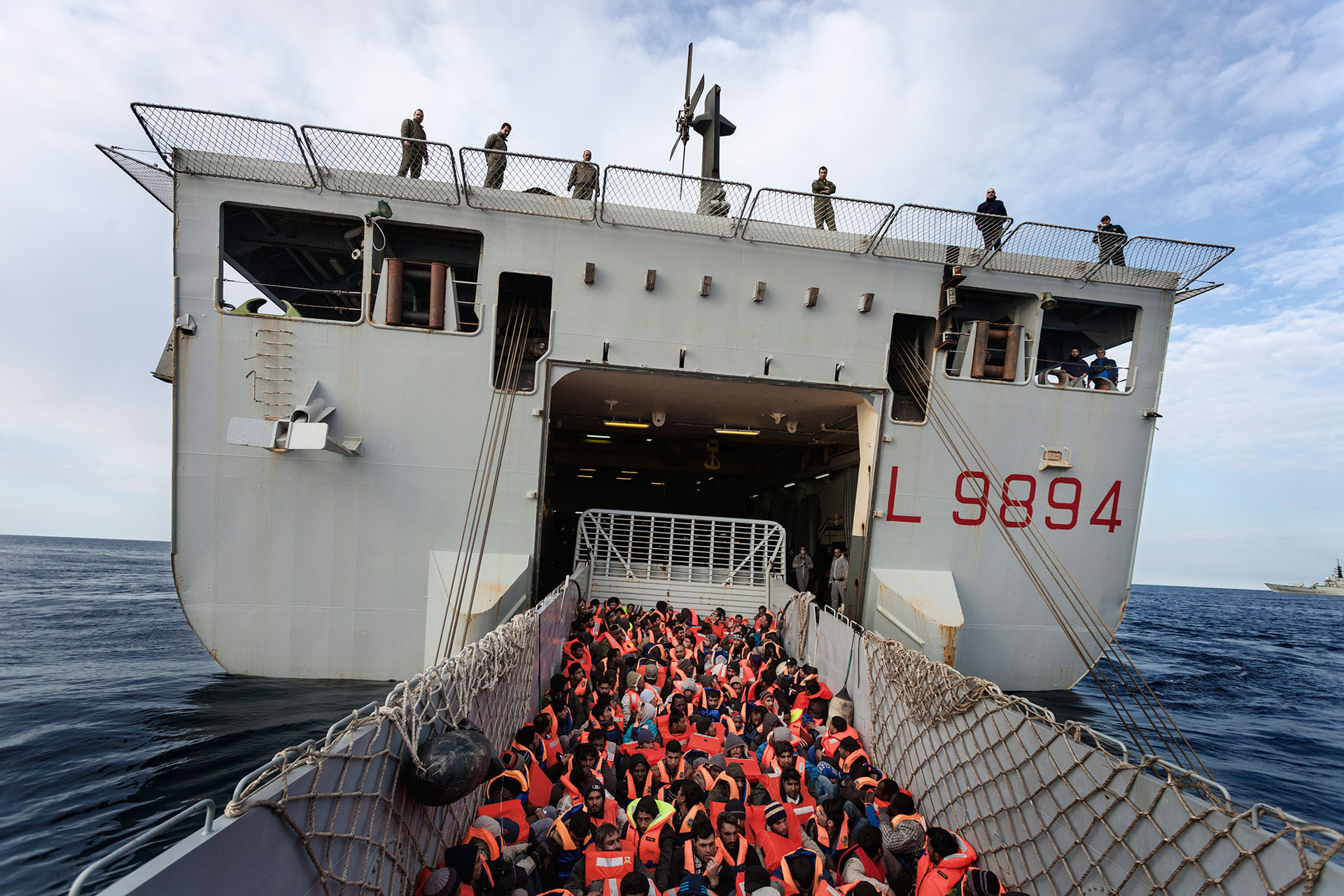Ending the Second Exile

Ending the Second Exile
The news is not good. Conflict and violence around the world have produced record numbers of people forced from their homes. Not a few thousand or tens of thousands. But millions of people – mothers, fathers, children, brothers, sisters, farmers, tradespeople, grandmothers, teachers.
Also: herders, shop owners, unskilled labourers, uncles and aunts, poets and writers, tough-minded business people, favourite cousins, bus drivers, people who tended gardens and cared for the children of others, people who cooked meals and went to school and played with their friends, and made music, who discussed the weather and argued about sports teams and politics, people who made plans, and dreamed dreams, and who loved and were loved.
As we recognize this World Refugee Day, they are like us in so many ways – except this: they have fled their homes amid bombs and bullets, victims of wanton and reckless violence, their pasts denied, their futures stolen, their present uncertain at best but too frequently utterly chaotic.
It is startling, when looking this reality in the face, that people forcibly displaced from their communities can be seen as dangers to other communities; that people fleeing violence and terror are condemned as security risks – so much so that wealthy and well-off states spend tens of millions of dollars to build fences and walls and send military boats to deflect and deter the flight of some of the neediest people in the world. The order and rule of law that the world seeks is precisely the order and rule of law that refugees are too often denied.
This organization has responded to the many crises of displacement that the world has witnessed in recent years. From the rolling seas of the Bay of Bengal to the troubled waters of the Mediterranean; from the arid lands of Mali and Somalia to the greener hills and plains of Nigeria, South Sudan, the Central African Republic, and Burundi; from Ukraine to Myanmar and the borderlands of Colombia and Afghanistan; among 4 million refugees fleeing the horrors of the conflict in Syria – in all these places and dozens more, UNHCR – along with many hundreds of partners – has stretched nearly beyond it limits in providing protection and assistance and seeking solutions. And while we possess the will and the dedication, we know that we lack the means; as much as neighbouring states provide and donor states offer, it is not enough to restore so many lives broken by flight, so many lives effectively put on hold by forces beyond their control.
It is the emergencies that grab the headlines, but just as troubling – even if less well noticed – is what comes after. Conflicts do not end and so displacement cannot end. And what start as temporary homes and makeshift communities begin to appear permanent – not because either refugees or hosting communities wish it be so but because there are too often no other alternatives.
“It is the emergencies that grab the headlines, but just as troubling – even if less well noticed – is what comes after.”
We – UNHCR, the international community, the displaced – will make it through the emergencies. Not without the scars of years of missed schooling and the memories of trauma. But UNHCR will ensure that sick and hungry children are healed and fed, and families who have lost their homes are provided shelter, and we will do our best to see that women and girls abused at home or otherwise denied rights can live in safety and be accorded equality.
But then what? How do we restore what has been lost – the very fabric and foundation of living and breathing and thriving families and societies? How do we help displaced people shed their label of "refugee" and see themselves again as fathers and mothers caring for their families and contributing to their communities?
To my mind, this is our biggest challenge, and it will only get bigger as the current crises inevitably become protracted, as children spend their childhood in refugee camps, and parents lose the dignity of self-reliance.
On this World Refugee Day – when we take time out to recognize the common humanity of refugees and people fortunate enough not to have been forced from their homes – we need think hard about how to ensure that displaced people are given the opportunity to return to their normal lives, the lives we – the non-displaced – so often take for granted.
I doubt we disagree on this objective, but we need to recognize that we are not currently well enough equipped to achieve it. It is not just a shortage of funds – although that is surely a problem. It is the way that we and the international community have tended to conceive of our roles and responsibilities. We see emergencies as the norm and solutions as the goal, but we not fully come to terms with the fact that the majority – soon, vast majority – of refugees will live in protracted situations.
This is our new realization: that protracted situations of displacement are now the rule, not the exception, and that the bulk of our work will now and into the foreseeable future take place in this middle space between flight and solution. In this space, refugees and other displaced people too often find themselves victims of a second exile. The first exile occurs when they are forced from their homes. The second exile occurs when they face deep and long-standing exclusions in places they have found safety – excluded from the right to work (and therefore to provide for their families), excluded from communities and forced to live in camps, excluded from education and health services and other benefits that hosting states provide to their citizens. The cumulative burden of these exclusions fosters dependency in camps and settlements and poverty in urban areas. It forces us to continue to provide humanitarian assistance (which is supposed to be about responding to emergencies) for years, decades, generations.
We have begun to respond to the challenge of the second exile. Our alternatives-to-camps policy recognizes that encampment produces long-term dependency and robs displaced people of dignity. Our new approaches to livelihoods – and the requirement that livelihoods projects in the field meet minimum standards of efficacy – will help us move from "care and maintenance" to the fostering of refugee self-reliance. We are working harder and better on solutions, through our Solutions Steering Group and statelessness campaign and our participation in the Solutions AllianceLink is external. Our innovation and education units have jointly launched important initiatives that offer great potential in advancing web-based schooling.
Hosting states and donor states are also recognizing the need for a fundamental pivot in the international community's approach to long-term displacement. Turkey has begun to grant work authorization and access to social benefits to Syrian refugees; Uganda's settlement policy opens up possibilities for refugee self-sufficiency; Colombia's participation in the Transitional Solutions Initiative has provided solid achievements in moving toward solutions for some of its 3 million internally displaced citizens; Zambia's solution strategy will finally close the chapter on the protracted situation for former Angolan refugees; and with funding from the Ikea Foundation, we have established innovative livelihoods projects in Dollo Ado, Ethiopia, and in Burkina Faso, which benefit both refugee populations and hosting communities. I could add to this list self-reliance initiatives in Chad and Bangladesh and India and Lebanon. We are fortunate to have strong partners in these efforts: Japan, Denmark, Sweden, the United States, Norway and Canada, among other donor states, have provided funding and know-how for many of these projects.
These are hopeful signs, but at the moment they remain somewhat ad hoc and uncoordinated responses and initiatives. In my view, it is now time for this organization to make ending care and maintenance, ending the second exile, an explicit and central goal for the next decade of our work. To do so, we will need to work closely with hosting states – to ensure that benefits of a new approach accrue to local communities as well as displaced populations – and with donor states, to help them understand the need for multi-year planning and funding. We will also need to retool ourselves, with managers and staff in field operations reorienting our work from the provision of assistance to programs of self-reliance and inclusion. And we will need to ensure that protection remains central to all these efforts, recognizing the crucial role that freedom of movement and the right to work must play in crafting an approach that helps restore refugees to more normal lives.
Let me conclude these remarks with a story. My daughter, a medical doctor, recently volunteered for a month with the Tanzanian Red Cross in our Nyarugusu camp, providing medical care to Congolese refugees. One of the refugees, who had come to the camp as a child and lived there for more than a decade, told her that he had taught himself English and completed all the educational programs he could in the camp. He now wanted to go to university, but there were no opportunities. He then mentioned the UNHCR symbol, and he said in our emblem "there are no hands or feet on the refugee." The implicit message, he was saying, is that refugees cannot do for themselves; rather they must be taken care of. In his words: "You can't work without hands; you can't go anywhere without feet."
If this is what our emblem communicates, it is unfortunate. We sometimes describe persons of concern as "the people we care for." And this is surely true – our emergency and post-emergency assistance literally saves lives – thousands of lives. But I think it is now time to see our goal as describing refugees as "the people we empower" – in effect, to put hands and feet on the person in our emblem. This must be our cause if we are to be true to the theme of this World Refugee Day.



















